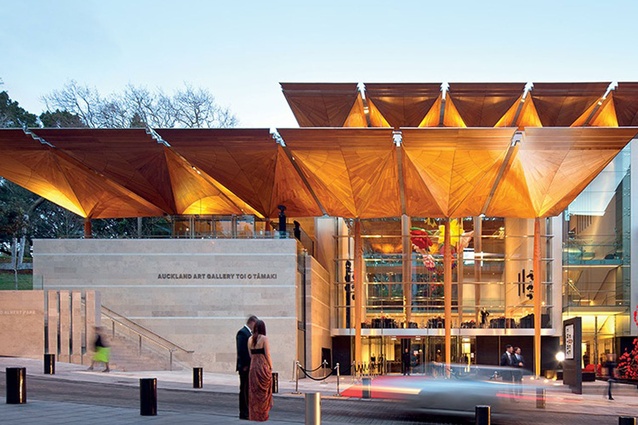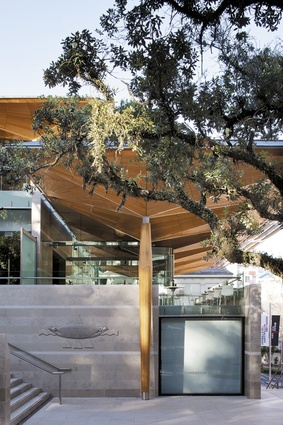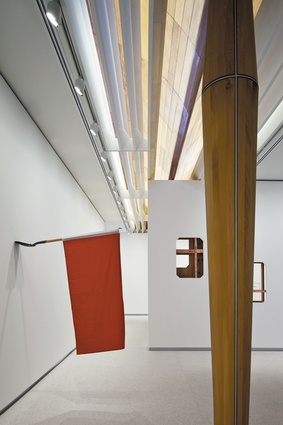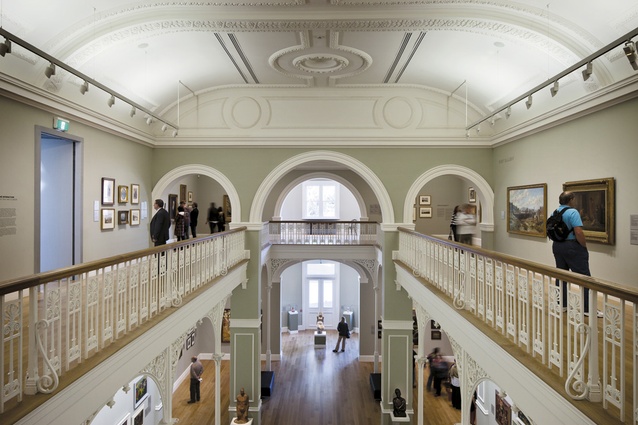Auckland Art Gallery “world’s best building”
Three eventful days at the World Architecture Festival in Singapore have culminated in an excellent result for New Zealand architecture with the Auckland Art Gallery Toi o Tamaki being named by the event's "super-jury" as World Building of the Year.
UPDATE: Watch an interview with Lindsay Mackie and Richard Francis Jones at WAF
At tonight’s gala dinner, at the Marina Bay Sands Convention Centre in Singapore, Richard Francis-Jones, from FJMT , who presented the project in both the Inside and World Architecture Festival culture categories, winning both, and Lindsay Mackie from Auckland-based practice Archimedia were on hand to receive the award.
Event director Paul Finch summarised that, between them, the architects had woven together through strands of history and culture, landscape and heritage.
During the World Architecture Festival, Francis-Jones’ presentations of this project have been exemplary; his responses to jury queries have been cool, measured and considered – perhaps his circumspect and unflappable delivery was the result of his time spent mired in the Environment Court.
A quick recap: in 2006, as reported in the New Zealand Herald , the gallery extension was described by one protester as an “insipid, mediocre effort”. Today, Francis-Jones and Mackie praised then-director Chris Saines for his resolute championing of the project in the face of such adversity.
In its cultural category, Auckland Art Gallery Toi o Tamaki faced off with global luminaries and crowd-favourites Zaha Hadid Architects. Hadid’s fluid, futuristic and almost amorphous forms clearly didn’t affect the jury members as did the vaulted kauri pods of the Auckland Art Gallery. This timber, dragged from fallen specimens deep in New Zealand’s forests, and then stitched together in joinery workshops in Papakura, are the new building’s obvious drawcard. Not to be forgotten, however, are the extensive amnd clever restoration works to the French renaissance wing of the building, designed by Melbourne architects Grainger & D’Ebrowhich in 1887.
Only a day ago Francis-Jones mused that he had perhaps he had entered the wrong category. “New and Old”, he reconsidered, might possibly have been a better, or easier, route to the final round. In the end, these second thoughts proved irrelevant.
In related news, two other major prizes were awarded during tonight’s gala dinner awards ceremony to mark the culmination of WAF 2013. “Landscape of the Year” was won by The Australian Garden, Australia, designed by Taylor Cullity Lethlean (TCL) + Paul Thompson. TCL has worked, to great acclaim, with Wraight + Assocaites on parts of Wynyard Quarter, in Auckland. “Future Project of the Year” was won by National Maritime Museum, China, designed by Cox Rayner Architects.
New Zealand’s RTA Studio and Irving Smith Jack Architects both presented at this year’s international awards. RTA, a regular at at WAF, received a high commendation for its Mackelvie Street, Ponsonby retail works.






















